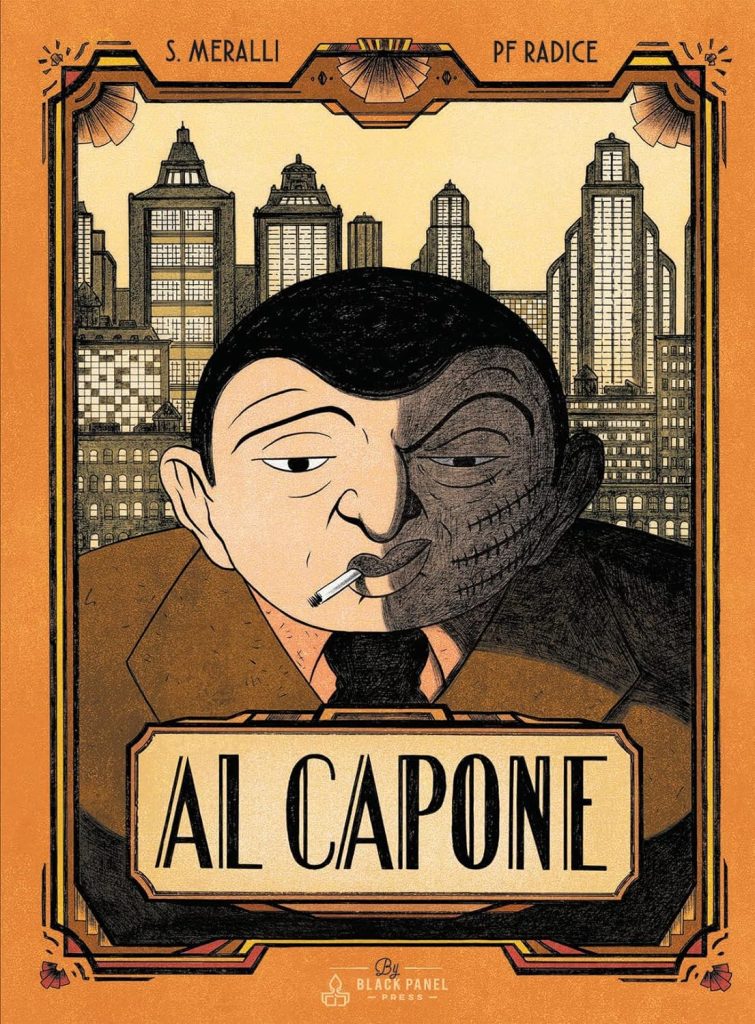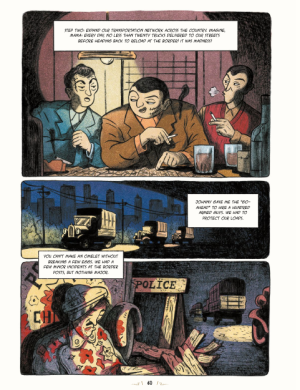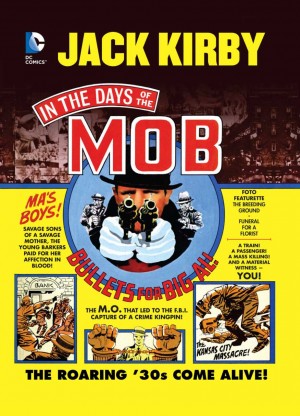Review by Ian Keogh
As the 2021 auction of Capone family belongings reiterated, there’s no lack of interest in America’s most famous 1930s gangster in the decades since his death.
Swann Meralli and P. F. Radice begin their biography with a telling moment introducing Capone’s unreliable narration. He’s in jail in 1938 and his mother is visiting. Newspaper headlines have reported the truth about him, yet to his mother he denies killings and robberies, and his shame is that he’s been caught. He asks why no paper reports the good he’s done, such as employing so many Italian Americans. It’s an extremely distorted impression of how he’s viewed by most of the world.
As related here, the feeling is that Capone’s youth was similar to that of tens of thousands of others growing up in New York’s desperate poverty during and after World War I when considerable prejudice existed toward Italian immigrants. The lesson he learned early was that honesty was a mug’s game, while ignoring an conscience and taking a few risks was the path out of poverty. Associating with gangsters was a natural progression, but when Al’s face is slashed he decides his prospects will be better in Chicago, where he rises to such worldwide infamy he’s even featured in an early Tintin story.
Those interested in the 1930s gangster era will already know the broad details of Capone’s rise, reign and fall, so Meralli doesn’t take the obvious biographical route. This is a lurid, pulp telling of Capone’s story, self-serving words placed in his mouth as he lies to his mother with contradictory art revealing the truth. Radice draws Capone as a bulbous brute of a man, entirely lacking the chubby faced innocence of so many photographs, his scars emphasised, and leaves readers in no doubt as to his violent nature and brutal world. Rivals are shown being shot, stabbed and slashed, and on a couple of occasions there are cinematic jumps from a killing to Al messily eating pasta slathered in tomato sauce.
What’s less known is that while controlling a criminal empire Capone did the good deeds he boasts about. The Capone Foundation to help underprivileged children still exists, and when set up ran orphanages, some children no doubt there due to his other activities, while he also funded shelters for the homeless. He actually was pictured on the cover of Time Magazine as shown here. None of this, though, would have been possible without the activities spattered in blood across so many pages.
While rather rushing through Capone’s final years, this is a very readable and distinctive biography of man whose legend continues to fascinate.





